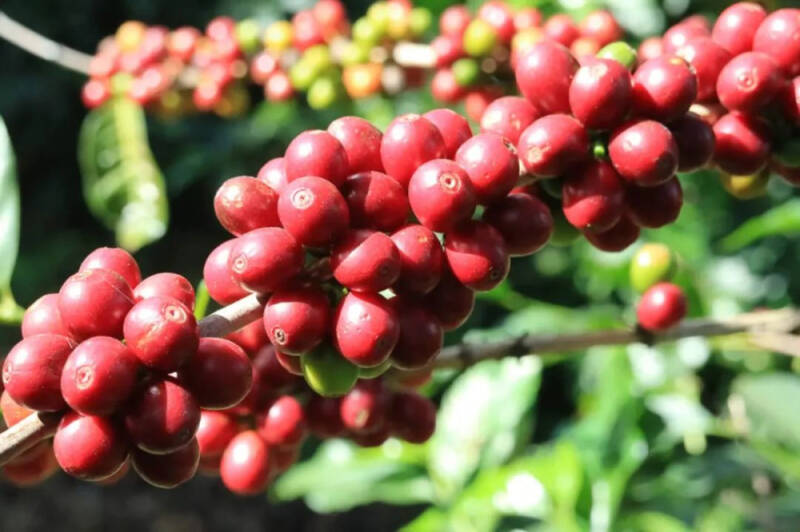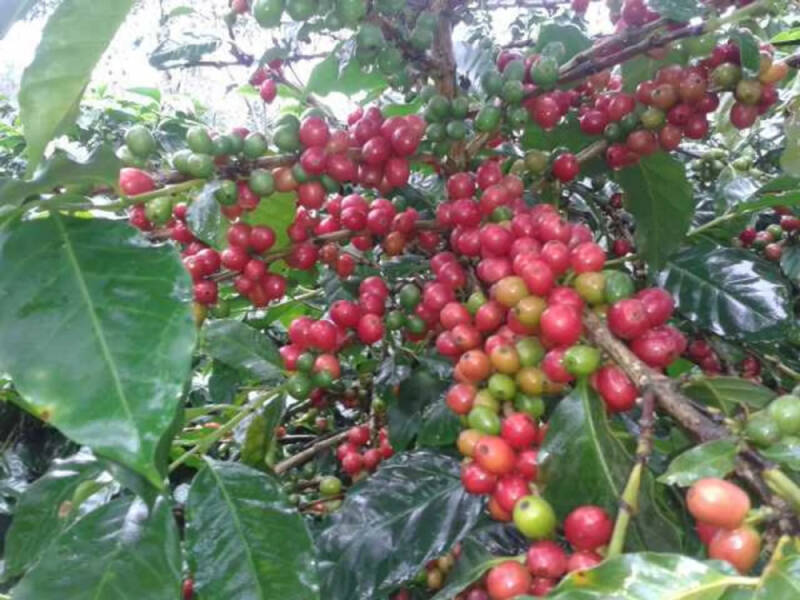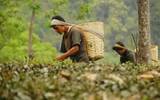Bourbon coffee bean derivative species: introduction of Kaddura, Verasac, Pacas and bourbon Mayaguis
Bourbon Bourbon is one of the most culturally and genetically important Arabica varieties of coffee, famous for its high altitude and excellent quality. However, the yield of bourbon is relatively low and is vulnerable to major diseases of coffee plants, so it is currently replaced by some derived varieties (Kaddura Caturra, Kaduai Catuai and New World Mundo Novo, etc.) in Latin America. However, bourbon is still grown in Brazil, Guatemala, El Salvador and other coffee-growing countries. Therefore, there are many derivative varieties of bourbon on the market.

Kaddura Caturra Kaddura is a natural variety of bourbon. Because of a single gene mutation, plants grow smaller and can be planted more densely, about 5000-6000 plants per hectare, and have the same excellent quality as bourbon. Kaddura is currently grown in Guatemala, Costa Rica, Honduras and Panama. Kaddura is also one of the parents of the Katim variety, which Kaddura crossed with the Timorese variety Timor, which is resistant to leaf rust. There are also many Kaddura varieties of coffee beans on the front street, such as the coffee beans of Flower Moon Night in Sandogatin, Colombia, which are treated by anaerobic sun treatment. When you cook with the ratio of V60 and 15, you will smell strong aromas of strawberries and fermented wine, with peach, chocolate and tropical fruit flavors in the mouth, with a smooth taste like drinking fruit wine.

Verasage villa sarchi is a variety found in Costa Rica in the 1950s or 1960s. The natural variety of bourbon also has a single gene mutation that causes plants to become smaller. In addition to intensive planting, Verasaki is also resistant to wind and rain and is not easy to fall, and can adapt to planting at high elevations. At present, it is mainly grown in Costa Rica, although
Pacas pacas Pacas is a natural variety of bourbon, with a single gene mutation like other bourbon varieties, so plants are smaller and can be planted more closely with other plants, so the yield is higher. The Pacas variety was first discovered in 1949 on a farm owned by the Pacas family in the Santa Ana region of El Salvador (hence the name Pacas). At present, it is mainly grown in El Salvador and Honduras. At present, Qianjie stores also have imported Parkas varieties of coffee beans. A coffee bean processed in a sherry barrel from Honduras. The coffee varieties are Kaddura, Kaduai and Pacas. When boiled with V60BI 1JU 15, it will smell like vanilla cream, with whisky, berries, almonds and dark chocolate on the palate, with a maple-like finish.
The bourbon Mayaguis BM71/139 is a bourbon variety introduced by Puerto Rico from Central America through the USDA seed collection and grown in the Mayaguus region of Puerto Rico. Later, the breed group in Mayaguis was introduced to Rwanda, where some coffee mother species were selected through variety breeding and selection, of which Bourbon Mayaguis 71Candle 139 was one of them. Although the yield of this variety is not as high as bourbon and is vulnerable to the major diseases of coffee, it can be grown at lower elevations and is now mainly grown in Rwanda and Burundi.
Important Notice :
前街咖啡 FrontStreet Coffee has moved to new addredd:
FrontStreet Coffee Address: 315,Donghua East Road,GuangZhou
Tel:020 38364473
- Prev

Vietnam coffee market crisis, Robusta prices continue to rise, traders go bankrupt
Recently, the Vietnam Coffee and Cocoa Association released a report saying that due to a number of factors, the price of Vietnamese robusta coffee has risen recently, and the expected price of coffee in the near future is 72 million to 73 million dong / ton, compared with 7150 to 72.5 million dong / ton earlier. Low international inventory, Robusta inventory
- Next

Is there a big difference between coffee brewed with 91 ℃ and 93 ℃?
A friend once wrote a private message in front of the street backstage: "is the temperature of the cooking water you suggest 91 ℃ or 93 ℃? will there be a big difference in taste when these two or three times come out?" Familiar friends may know that when sharing coffee extraction parameters in Qianjie, the water temperature is often a range rather than an accurate number.
Related
- Is espresso stored overnight in the refrigerator harmful to your body? Is frozen coffee better than freshly ground coffee?
- What parameters and proportions of water temperature should be used to grind and brew fresh coffee beans? Why can't I drink freshly roasted coffee right away?
- Customers have "changed" Manner's new products! Shop assistant: Please don't mess around!
- Remove sockets in customer areas at Starbucks stores?! Netizen: I won't go if I really tear it down
- What is the difference between the taste steps of sun-dried coffee and washed coffee? Why is sun-cured coffee sweeter and washed coffee sour?
- The recipe for salty grapefruit dirty is revealed! Coffee Festival salty grapefruit dirty coffee making materials parameters ratio milk share!
- How about the flavor of Sunlight 74158 at Sidamo Banshaha Mathieu Processing Factory in Ethiopia? 74158 Share the proportion of coffee brewing parameters!
- What effect does Italian American coffee with filter paper have? Will coffee taste better if it is put on filter paper at the bottom of the powder bowl?
- What is the color difference in coffee beans? What are the characteristics of honey processed coffee beans? Why are the anaerobically treated coffee beans uneven in color?
- How does novice Xiaobai quickly get started and make coffee? Newbies learn to make coffee by hand and share the specific steps and process process!

